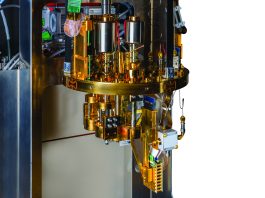The National Institute of Standards and Technology (NIST) has selected Florida Atlantic University’s Hamming Quasi-Cyclic (HQC) for standardisation in its Post-Quantum Cryptography (PQC) project.
After a thorough evaluation process, NIST selected HQC to be part of the new generation of quantum encryption standards for its ability to meet its criteria for security, efficiency and practical implementation.
HQC is a cryptographic algorithm designed to ensure secure key exchange between two parties, enabling them to share a common, secret key that can be used to encrypt and decrypt messages.
This key exchange is a critical aspect of securing communication channels, ensuring that both sides have the same quantum encryption key without the risk of interception.
Safeguarding digital communications with quantum encryption
Hamming Quasi-Cyclic is a next-generation cryptographic solution that aims to safeguard sensitive digital communications, offering robust protection both today and against the emerging threats of quantum computing in the future.
It will be the second key-encapsulation mechanism (KEM) to be standardised by NIST, with the first being ML-KEM. KEMs are essential for secure communication as they are used to exchange quantum encryption keys safely between parties.
FAU is the only US university involved among all the authors of the two winning KEM schemes selected by NIST, highlighting its prominent role in the field of post-quantum cryptography.
“The selection of HQC is a major step forward in preparing for a future where quantum computers will disrupt current encryption systems,” said Edoardo Persichetti, PhD, an associate professor in the Department of Mathematics and Statistics within the FAU Charles E. Schmidt College of Science.
“What sets HQC apart is its quantum-resistant security. Unlike traditional cryptographic methods, which could be broken by powerful quantum computers, HQC is designed specifically to withstand attacks from these advanced machines.
“This makes it a post-quantum cryptographic solution, meaning it’s built to protect against future threats posed by quantum computing.”
The Post-Quantum Cryptography project’s role in the future of quantum
The PQC initiative, launched by NIST in 2016, is a project aimed at developing new quantum cryptographic standards that can withstand the potential threats posed by quantum computers.
Quantum computers have the ability to solve mathematical problems that traditional computers cannot, which could render current encryption systems like RSA and ECC (Elliptic Curve Cryptography) vulnerable. These systems are widely used to protect sensitive data and communications.
The future of collaboration in the quantum industry
“This achievement underscores the power of international collaboration in advancing post-quantum cryptography and is a testament to the global impact of our research,” said Valery Forbes, PhD, dean of the Charles E. Schmidt College of Science.
“It is also a moment of immense pride for our cryptography team in the Schmidt College of Science, galvanising our position as a leading force in securing the future of digital information in the United States, particularly in the pivotal field of post-quantum cryptography.”
Persichetti concluded: “By addressing this future risk now, the PQC initiative aims to ensure that critical systems for data protection, digital signatures, and secure communications will continue to function securely in the quantum era.
“This ongoing process of evaluation and standardisation will provide a foundation for developing quantum-resistant cryptographic algorithms that can secure both current and future digital infrastructures, ensuring privacy and security for generations to come.”









